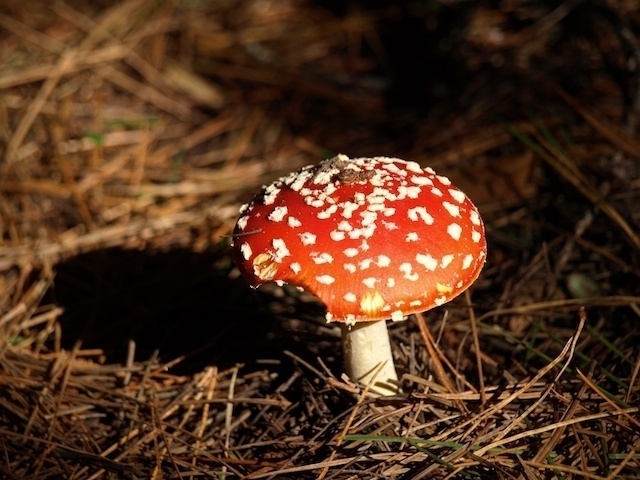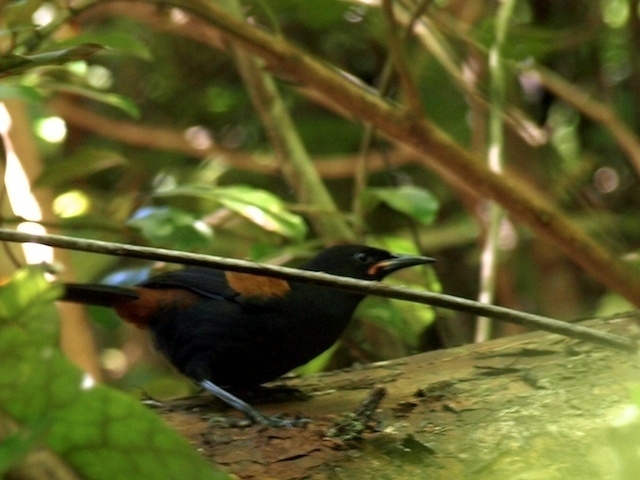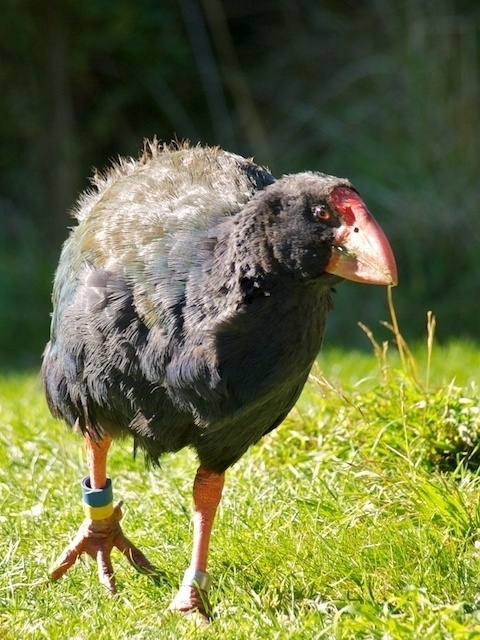The weather has suddenly gone all settled and warm. This is perhaps not unusual for autumn, but given the crap summer most parts of the country have had for the past few months this is somewhat unexpected. In fact the forecast for Easter was so dire that it played a reasonable part in us deciding to hunker down at home.
Anyway, yesterday being another in this run of fine, fine days, I thought we should all trek into the Karori Wildlife Sanctuary, or Zealandia as it is now called. This, for those unfamiliar with it, is a large area of wooded valley not far from the centre of Wellington that has been enclosed by a rat/cat/possum/stoat-proof fence, with lots of fairly rare native species “liberated” inside. We’re members, but we never remember to visit often enough.
This time, I really wanted to get further up the valley into some areas I had not been to before, and also to see if I could spot and take photos of the resident falcons (Kārearea).
The first of these objectives was reached, but not the second. Lots of good exercise, and many not so good photos were taken…
Geckos
The first animals we saw were the beautiful green geckos sunning themselves in their terrariums:

These are pretty hard to find, being so cryptic. Even in their terrarium it can sometimes take a bit of effort to spot them, such is their camouflage.
We’ve seen one in the wild once, while we were on a bush walk in the hills west of Napier some years ago. It was lying on the path, presumably close to death or it would have scuttled away. Another time, I found one of their more common cousins in a high-rise in the centre of town, which was a pretty peculiar occurrence… but that’s another story.
I find the texture of their scales very pretty indeed:

Sadly, these are not animals that can co-exist with rats, so we are unlikely to find any of these around our house, prime habitat though it is.
Along the valley’s side
We were pretty keen to stay out of the way of the mass of people trundling along the flat, stroller-friendly valley floor. There are lots of tracks that twist up and through the pines and regenerating bush.
Up there, it’s clearly autumn:

The dry, brown pine-needles also provide quite a nice contrast to the Hound’s Tongue fern that were everywhere under the pines:

Then we heard a new (to us) birdcall. After a bit of careful observation R. found a pair of Stitchbirds (Hihi) in a bush full of berries beside a track further up the hill… but just as we were bringing the cameras to bear a pair of Tui (Tūī) arrived on the scene and chased them off. Tui are pretty aggressive and like to lord it over the local Stitchbirds and Bellbirds (Korimako), to the point where special supplementary feeders have had to be constructed that the larger Tui can’t get into.
That was the last we saw of the Stitchbirds. But there was still plenty to see and hear: particularly, noisy little flocks of Whiteheads (Pōpokotea), a few Waxeyes (Tauhou), the occasional Grey Warbler (Riroriro), and the omnipresent Tuis - the latter three species we have around our house every day. (The Tui only since the Sanctuary was founded - they’ve gotten enough numbers now to spread right out across the city whereas before they were rare here.)
Robins
One rare bird we did see a lot of was the North Island Robin (Toutouwai), particularly further up the valley past the top lake. Like their cousins, the Tomtits–who we saw on a very similar autumn day three years ago–the robins tend to be a bit territorial and will stand their ground, often advancing quite close.
It certainly makes them easier to photo:

That one was banded - the numbers on the metal ID are fairly readable.
And judging by the angle on this photo you can see how close the robins get. This bird was almost under my feet.

I shouldn’t call these wee birds cute. But I will. They’re cute.
Saddlebacks
The other rare bird we saw a lot of was the Saddleback (Tieke). This was a slightly amusing point, as we were passed at one stage by a chap whose fondest wish was to spot one. There was one here just a minute ago, we told him, but he steamed on. Of course, once he was gone, the saddleback returned.
Sadly, they seemed to hang out in the most shady spots and our photos aren’t that fantastic.
We have a blurry saddleback:

One on a twig:

The same one - but check out those wattles!

(OK, that wasn’t that impressive.)
But I console myself that I probably managed to get the best picture ever taken of a saddleback’s arse.

But aside from trying to take photos of them, they were lovely to observe. I watched one bound up and down tree boughs, inspecting little leaf-falls and bark clumps for insects. When it had caught something, it would bounce back through the branches arching over the track to another saddleback. The second bird performed what looked like begging movements: bobbing and wing flickering. It got the food - so it must have been a pretty much fully fledged chick.
Lazy bugger needed to leave home, I thought.
Back along the main track
We rounded the upper lake and rejoined the main track back down the valley. Sadly, all the Kaka (Kākā) were out and about - on fine days they apparently don’t like to hang around the Sanctuary and instead venture out into the suburbs and beyond.
(One fine day in springtime last year we had a kaka visit our house, four km from the Sanctuary. Judging by the various videos and photos taken by people living close by, it appears kaka have learned that if a house has a deck, then one can obtain food by boogieing up and down the deck railing in a fetching manner (as our visitor did). We weren’t smart enough to figure out what it wanted… but then we wouldn’t have fed it either. It flew away before I could get a photo.)
We passed the terraria containing baby Tuatara. The girls and R. thought they’d grown quite a bit since January when they were last here:

Like the geckos, they actually took a little bit of spotting in their little scrapes under pieces of bark.
But as for me, all that walking, together with the name “Tuatara”, was making me feel thirsty for beer. I am a chap of simple needs.
And so on to the top of the lake, where there was a couple of Takahe (Takahē) lurking. OK, so they’re practically tame and wander about at your feet, so pictures are easy:

I don’t think it’s an especially pretty bird (not that that matters, and of course opinions vary), but I like the way the sun catches its eye.
The exhibition
Since the last time I’d been to the Sanctuary they’ve spent up large and built an “attraction” - an exhibition and café. We skipped the café and had a quick look at the exhibition.
I found the whole thing a bit of a downer really: really interesting, but very very sad. Stuffed birds yes, but lots of good info and interactive displays. But in the stairwell to the upper level there were plaques for a whole lot of extinct species I’d never even heard of. And then there was the thing they show every half an hour, a five minute montage of the last 1,000 years of biological history, a epic disaster movie showing just how all those species were lost. It was so sad and disturbing our youngest couldn’t watch it.
I ended up wondering if, given how badly the human race had f••ked up on these islands, was it worth trying to save anything that couldn’t now save itself? If all we humans disappeared tomorrow, the Sanctuary would be overrun with pests and every one of the rare species killed within just a few years. Is this “mainland island” a sustainable approach to conservation?
But I suppose the point is not so much sustainable conservation, as awareness that things need doing. But frankly, I’m not sure we’re up to the task of doing it. Humans themselves are a plague, a dangerous monoculture of maximal resource utilisation at the expense of all others. We’re at a stage now where there’s decreasing room for other species, except those that can live in parasitic or commensal relationships with us.
What a happy thought.
Home again
I never got to see the falcons close up - maybe another time. Even so, I’m not likely to get photos as good as these by Steve Attwood, who hung out in the Sanctuary for days getting them.
Still, we had a lovely walk of around eight kilometres, which made me happy. Then back at home, I had my beer, which made me happier.
Easter was not wasted.